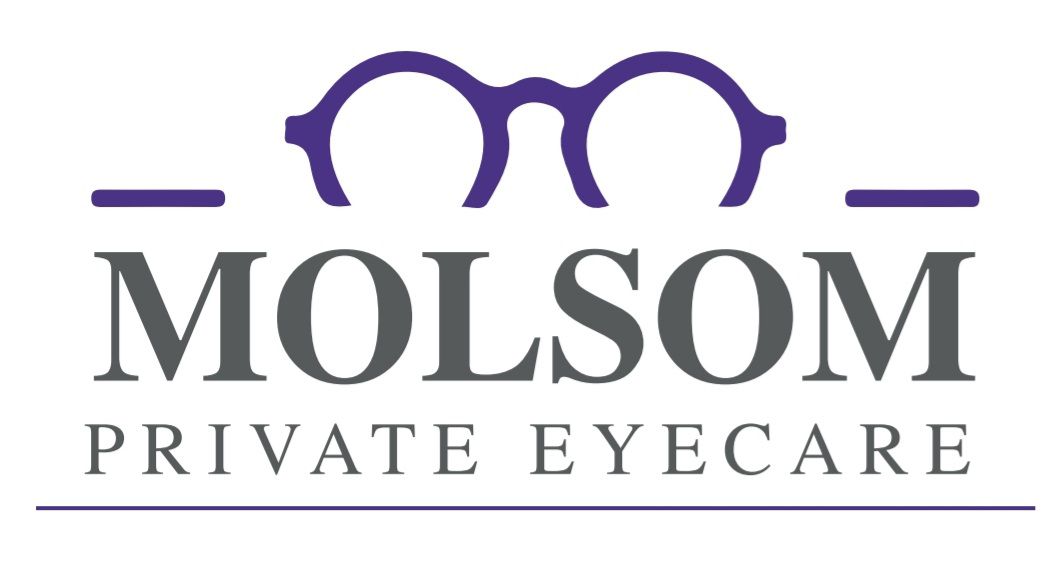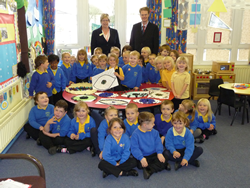Children’s Campaign Winners – September 2012
Following a successful open day on 22nd September, to promote the importance of children’s eyecare, lots of children left happy with a balloon and some sweets, and hopefully parents a little better informed about how important children’s eyesight is.
The general public judged the competition for local reception class children, to design a mosaic of the eye using any materials they wished. The winner was St Paul’s Primary School on Queens Road in Spalding. Their mosaic was very ingenious, using the “eye” of a Peacock feather as the iris (coloured part of the eye). On Wednesday 26th September, Andy Molsom and Bridget Scase from Molsom Opticians presented them with a cheque for £50 to go towards the cost of the Outdoor Stage they are making. All of the children also went home with some sweets.
Commenting Andy Molsom said “Seeing all of the children’s faces light up when they found out they’d won our competition was wonderful; only a few of the children had ever visited an optician, which demonstrates why our campaign is so important. We’ll be continuing with our campaign to highlight the need for regular eye examinations for young children. The next stage is to visit primary schools to give talks to children about their eyes and we will be contacting teachers over the next few weeks.”
Chief Executive of the Sight Care Group – an organisation that promotes independent opticians, said – ” Molsom & Associates are great Ambassadors for independent opticians up and down the UK. Their commitment and dedication to promoting the very best eye care for all the family, and especially children, is unsurpassed”.
All of the competition entries are on display in the window of the practice in Hall Place for two weeks. They were all of a very high standard, and everyone in the community is encouraged to come and have a look at the clever designs.
Key Points regarding children’s eyecare
- Children’s eye tests are FREE.
- Children are never too young to have their eyes checked.
- Taking children to have their eyes checked is just as important as the trip to the dentist, or having their feet measured.
- Ideally a child’s first eye test should be around the age of four, or even before, as problems detected this young can be corrected more easily.
- Early detection means common childhood sight conditions can be more easily treated. The eye is still developing throughout early childhood, so if problems are treated early it can make a life-lasting difference.
- Good vision during a childs early years can also help them fulfil their academic potential.
- It is estimated one in five school aged children (about 1 million children) has an undetected vision problem that could restrict their ability to learn, read, write and spell.
- Children with a family history of eye problems are more at risk of developing squint and lazy eye.
- Signs to look out for:
- Difficulty concentrating, thus avoiding close work tasks
- Behavioural problems
- Headaches
- Rub eyes frequently
- Difficulty with hand-eye coordination

